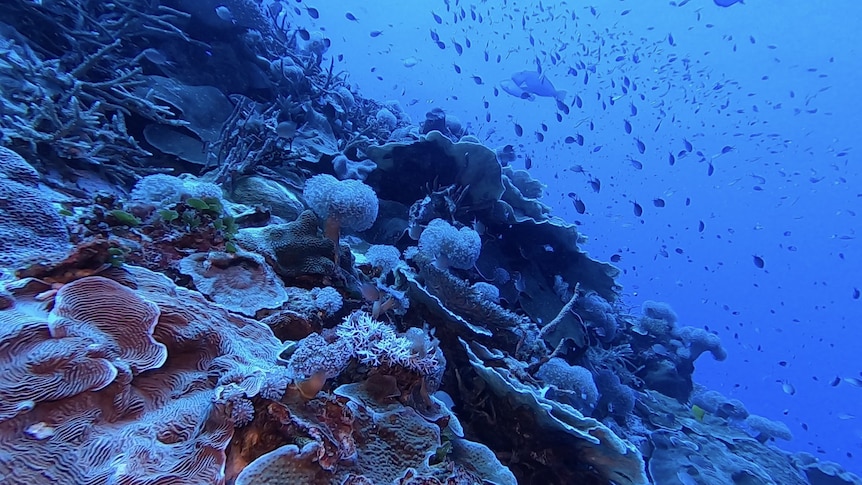- cross-posted to:
- ocean@sh.itjust.works
- cross-posted to:
- ocean@sh.itjust.works
Gemma Galbraith is surprised by what she sees in the water below her dinghy as she bobs in the middle of the Coral Sea.
The highest number of reef fish were recorded at depths between 40 metres and 60 metres.
'Just scratched the surface' James Cook University marine ecology researcher Andrew Hoey said the study into deeper parts of the reef extended from a longer study into the effects of climate change and human disturbance in more shallow sections.
He said the lack of "localised" human disturbances usually encountered in shallow coral coastal populations — such as fishing and sedimentary run-off – could have facilitated higher coral coverage in deeper, remote parts of the Coral Sea.
"They do support sort of what we call near pristine populations of fish – they don't see the fishing pressure that you do on a lot of the coastal reefs, especially some areas of the Great Barrier Reef, and then they're not subjected to, frequent disturbance," Professor Hoey said.


